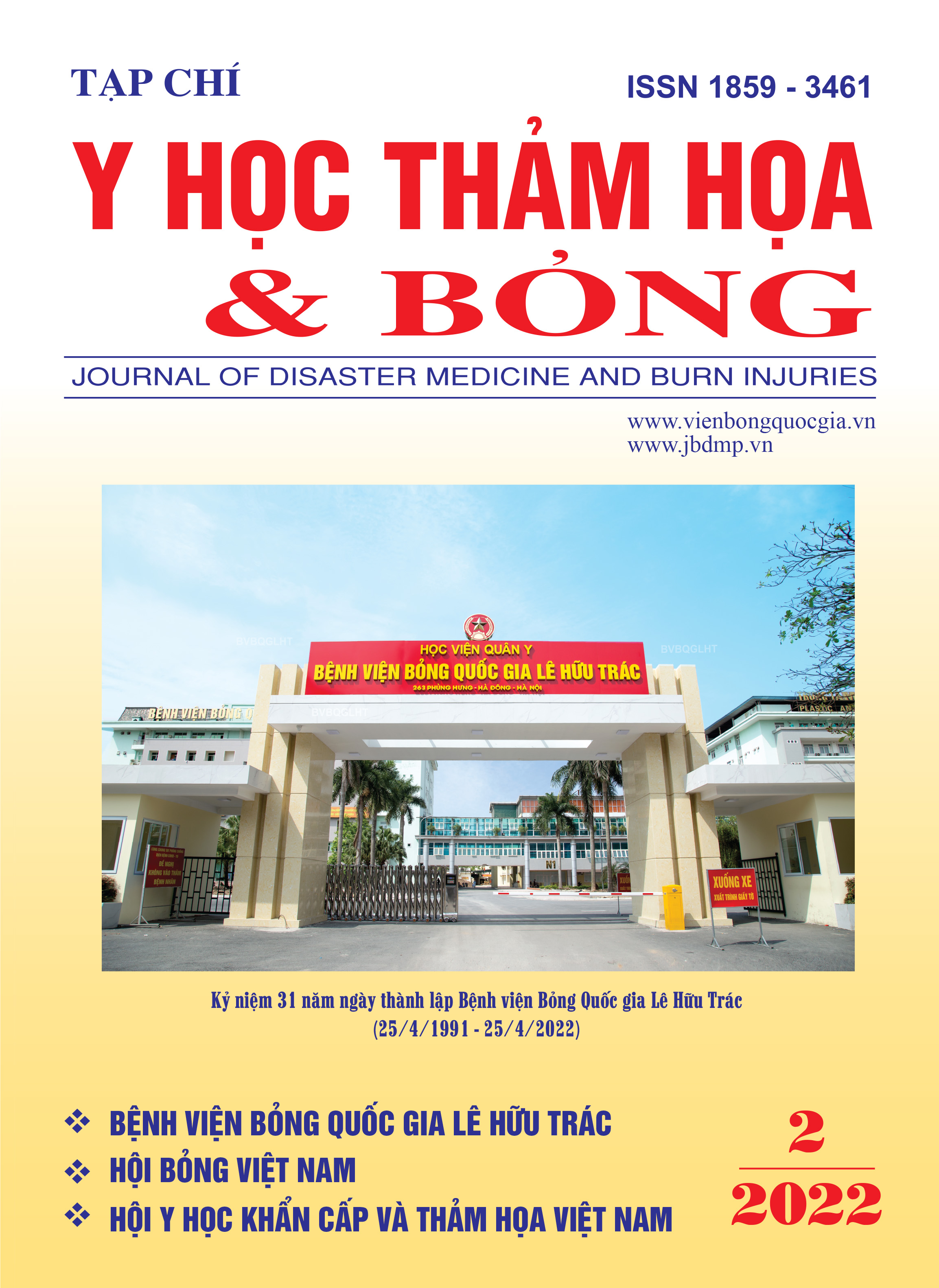Characteristics and outcomes of burn patients with viral hepatitis B and C
Main Article Content
Abstract
Objectives: To evaluate the incidence, characteristics and influence of viral hepatitis on outcomes of burn patients.
Subjects and methods: This retrospective study was conducted on 15.301 burn patients admitted to the National burn hospital for 5 years (2016 - 2020). Patients were divided into two groups: The viral hepatitis group and the non-hepatitis, comparing the two groups in demographic, manifestation and outcome.
Results: The incidence of viral hepatitis accounted for 3.54%, mainly among adults, self-employed and men. There was no difference between the two groups in terms of complications and length of stay in the hospital. However, compared with the non-hepatitis group, the patient group with virus hepatitis had a significantly higher incidence of mortality (5.9% vs. 3.12%, p = 0.000).
In addition, the results of multivariate analysis showed that the Hepatitis C virus was independently associated with mortality in burn patients of the same age, sex, burn extent, deep burn area and inhalation injury.
Conclusion: Hepatitis C virus was independently associated with mortality in burn patients. Prospective studies on the reactivation of latent viruses and the effects of hepatitis virus infection in burn patients were needed.
Article Details
Keywords
Burn, hepatitis virus, outcomes
References
2. Schroeder J. E., Tessone A., Angel M., et al. (2009) Disseminated Varicella infection in an adult burn victim-A transfused disease? burns, 35 (2), 297-299.
3. Chen C. J., Wang L. Y., Yu M. W. (2000) Epidemiology of hepatitis B virus infection in the Asia-Pacific region. Journal of gastroenterology and hepatology, 15, E3-E6.
4. Huy T. T., Abe K. (2004) Molecular epidemiology of hepatitis B and C virus infections in Asia. Pediatrics International, 46 (2), 223-230.
5. Bộ Y tế (2019). Điều tra ước tính tỷ lệ nhiễm vi rút viêm gan B và vi rút viêm gan C trong nhóm người trưởng thành tại Việt Nam 2018-2011, Hà Nội.
6. Jefferies M., Rauff B., Rashid H., et al. (2018). Update on global epidemiology of viral hepatitis and preventive strategies. World journal of clinical cases, 6(13), 589.
7. Ngô Viết Lộc (2011) Nghiên cứu tình hình nhiễm vi rút viêm gan B trong cộng đồng dân cư tại Thừa Thiên Huế năm 2006-2009.
8. Bian H., Lai W., Zheng S. et al. (2015) Analysis of liver damage and reactivation of hepatitis B virus in hepatitis B surface antigen-positive patients after extremely severe burn injury. Chinese Journal of Burns, 31 (4), 244-247.


